
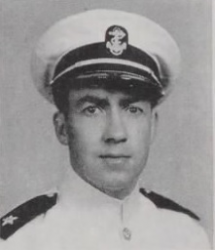 |
|
|
||
|
JOHN CADY LOUGH 'Johnny' |
||||
|
Engagements: • World War II (1941 - 1945) |
||||
| Biography: | ||||
|
Ensign John Cady Lough Naval Aviator, USNR Navy Cross and Purple Heart JOHN CADY LOUGH, also known as Johnny, was born 22 Nov 1915 in Geneseo, Henry, Illinois. He was the son of George Walter Lough and Ruth Gertrude Cady who married 09 Dec 1914 in Geneseo, Henry, IL. His siblings were Ruth Genevieve and Rose Ann Lough. John was a conscientious student at Darnall high school (previously named Geneseo Township HS). He graduated from Darnell HS on 01 June 1934. He stayed at home on the farm for two years before he applied to Illinois Wesleyan University in Bloomington, IL on 14 September 1936. He studied in the College of Liberal Arts. John provided a good part of his funds for education by his own effort. For example, while in college John earned part of his tuition by working the first two years in the school heating plant. The last two years he worked as an assistant in a biology lab. During all four years, He worked at a city restaurant for three meals per day. During each summer for three months, he worked at a hybrid seed-corn business. All the farm work required the operation of tractors and trucks as well as various types of farm machinery. It also included experience as a foreman and timekeeper for approximately fifty men. John graduated on 04 June 1940 with a Bachelor of Science degree in Chemistry. He was a member of Phi Sigma Epsilon Fraternity and Alpha Epsilon Delta, a Medical Preprofessional Honor Society and the University Chorus. On 16 Oct 1940, John registered for the Young Men draft. He was employed by Clyde D. Ford in Geneseo, IL where he lived with his parents. The next day John submitted an application for aviation training in the Volunteer U.S. Naval Reserve Flight Training Program (V-5) at the Naval Reserve Aviation Base (NRAB), St. Louis Municipal Airport, Robertson, MO. He was required to submit; all high school and college transcripts; a personal resume; a police background check; three personal references; a photograph of himself; take a physical exam; and sit for an interview with the Naval Reserve Flight Selection Board. The Selection Board interviewed John on 28 Oct 1940 at the NRAB, Robertson, Missouri. He ranked 4/24 in class No., 8 and assigned him a mark of 3.75/4.0 in potential ability as an officer and naval aviator. On 2 Dec 1940, at the NRAB, Robertson, MO, John enlisted for four years in the V-5 Program (NSN: 411-38-15) as a Seaman 2c. On 16 Dec 1940, Lough reported to NRAB, Robertson for elimination training (e-training). He acquired 16.4 hours of flying time in the N3N landplanes and a final flight mark of 2.911. On 19 January 1940, Lough completing the 30-day e-training that included at least one solo flight, he was released to inactive duty and sent home to await further orders. He received his orders from the Secretary of the Navy on 01 March 1940 that stated upon acceptance of appointment as Aviation Cadet he was to report on 06 March 1940 to Commandant, Naval Air Station (NAS), Pensacola, FL for active duty undergoing training. These orders were signed by Admiral C.W. Nimitz, Chief Bureau of Navigation. Lough was honorably discharged from enlisted status on 05 Mar 1941. The following day John took the oath of office and accepted an appointment as an Aviation Cadet. He also subscribed to $10,000 government life insurance policy with a monthly premium of $6.70. His date of rank as an Aviation Cadet was 01 Mar 1941. Aviation Cadet Lough was one of 58 (class size increased) assigned to Aviation Cadet Class 164-C that began its two week indoctrination phase in the second week of March (His last name was misspelled as Longh in the Pensacola News Journal, 17 Mar 1941, article announcing the formation of the class). After completing his primary and basic flight training at NAS Pensacola, FL., Lough detached from NAS Pensacola on 26 August 1941 and transferred to NAS, Miami, FL. He arrived on 29 August to begin carrier plane pilot training with the Advanced Training Specialized Carrier Group at NAS Miami (Opa-Locka). Lough received his designation as a naval aviator (heavier-than-air) on 01 Oct 1941. On 06 October, 1941, he took the oath of office and accepted a commission as an Ensign, A-V(N), USNR. His date of rank was 18 Aug 1941. He completed his training on 01 Nov 1941. His final class standing was 80/95 cadets. His final course mark was 3.09 and the amount of flight time was 237.0 hours. Ensign Lough detached from NAS Miami and reported to NAS Norfolk, VA on 21 Nov 1941 where he reported to the Advanced Carrier Training Group (ACTG) for 6-8 weeks of advanced flight instruction. According to orders dated 13 Oct 1941, Ensign Lough was to report to ACTG in Norfolk, VA for 6-8 weeks of advanced flight instruction. When detached by ACTG, Ensign Lough was to report for duty to Scouting Squadron-72 (USS Wasp) on the East coast. However, in likely response to President Roosevelt's 27 May 1941 proclamation of an unlimited national emergency, many new aviators' orders were changed from East coast assignments to the West Coast. On 16 Feb 1942, Lough's original orders were modified. The modified orders read in part; "You are hereby detached from temporary active duty in the Advanced Carrier Training Group, Atlantic Fleet, and will proceed immediately and report to the Commandant twelfth Naval District for first available transportation to the port in which Scouting Squadron Six may be and upon arrival report to the Commanding Officer, Scouting Squadron Six (U.S.S. Enterprise) for active duty involving flying in that squadron." Lough detached from the ACTG on 16 Feb 1942. Six days later on 22 Feb 1942, Ensign Lough along with other rookie pilots Ensigns John Butler, John Quincy Roberts, Elmer Maul, Frank O'Flaherty, Raymond Miligi, John Bridgers and Carl Peiffer boarded the transport ship President Hoover in San Diego. She steamed westward and arrived in Pearl Harbor on 01 Mar. They were temporarily assigned to Lcdr Max Leslie's shore-based Bombing Squadron Three (VB-3) as replacement pilots. Lough reported to VS-6 on 11 March, but temporarily remained with VB-3. Now began about a month of training for the new pilots on the SBD-3 Dauntless dive bomber. On 03 April 1942, Ensign Lough of VB-3 cracked up a Dauntless beyond repair while landing on Oahu. After about a month's training in Hawaii on the new Dauntless Dive Bomber SBD-3, VB-3, including Ensign Lough, temporarily replaced Scouting Six (VS-6) on board the Enterprise prior to her departure on 08 April 1942 for the Doolittle raid in company with the USS Hornet. After the raid on Tokyo, Enterprise steamed back to Pearl Harbor. It was during the cruise back to Pearl that Lcdr Max Leslie, Bombing 3 Skipper, took the opportunity to carrier-qualify some of his rookie pilots, including Ensigns Frank O'Flaherty, Johnny Lough, John Bridges, and Carl Peiffer. Shortly after the Enterprise's air group landed in Pearl Harbor prior to 25 April 1942 when Enterprise entered Pearl, Ensigns Peiffer, John Roberts, Frank O'Flaherty and Johnny Lough, were temporarily transferred from Bombing Three to Scouting Six (Enterprise) to help ameliorate VS-6 pilot losses and transfers. Underway on 30 April, Enterprise and USS Hornet received their squadrons from bases on Hawaii. VS-6 had replaced VB-3 on Enterprise. It was to be a badly needed training cruise, however, several days later Enterprise and Hornet were directed to the South Pacific to assist aircraft carriers USS Lexington (CV-2) and USS Yorktown (CV-5) engaged in the battle of the Coral Sea. The battle was over before they could arrive on-scene. Enterprise was then directed to perform a feint towards Nauru and Banaba (Ocean) islands which caused the Japanese to delay Operation RY to seize the two islands. Enterprise returned to Pearl Harbor on 26 May and began intensive preparations to meet an expected Japanese thrust at Midway Island. She got underway from Pearl Harbor on 28 May 1942, and with USS Hornet (CV-8), steamed toward a point Northeast of Midway called "Point Luck." USS Yorktown (CV-5) followed a short time later. Early on the morning of 4 Jun 1942 the Enterprises' air group along with those from the USS Hornet (CV-8) and USS Yorktown (CV-5) launched their strike packages to intercept and attack the Japanese carrier fleet approaching the Midway Atoll. The Commanding Officer of VS-6, Lt Wilmer Gallagher, led his squadron in SBD 6-S-1 which was comprised of three divisions for a total of 14 SBD dive bombers. Ens Lough was assigned to the second division flying in SBD 6-S-14 with his rear-seat gunner, RM3 Louis Dale Hansen. Second Division was led by Lt Clarence Dickinson in 6-S-10. At 1022, the fourteen VS-6 bombers began their attack on the Japanese aircraft carrier Kaga with minimal opposition from Japanese CAP or anti-aircraft fire. Within moments the Kaga was struck by many bombs that set her afire from bow to stern. After pulling out of their attack dive, VS-6 aircraft were attacked by Japanese fighters. Already low on fuel they were forced to employ evasive maneuvers to avoid their attackers as well as a hail of anti-aircraft fire from the ships. Ens Lough survived the initial assault on Kaga and joined with Lt Charles Ware in 6-S-4, VS-6 third division leader, and Ensigns James Shelton (6-S-6), Frank O'Flaherty (6-S-5), Carl D. Peiffer (6-S-12) and John McCarthy (6-S-15). After clearing the battle area, Lt Ware led his group toward Midway per previous instructions. He assembled the six planes into 2 three plane sections. Section one was himself, Ens. Shelton and Ens. Peiffer. The second section comprised Ens. McCarthy, Ens. O'Flaherty and Ens. John C. Lough. Shortly after they started for home Ens. O'Flaherty was forced to ditch 6-S-5 because of fuel exhaustion. He was last seen getting into his life raft with his gunner Bruno Gaito. As the Ware group continued onward they were sighted and attacked by several enemy planes from a Japanese attack group from Hiryu that was counter-attacking Yorktown. Although no American planes were shot down during this encounter they were forced to use up vital fuel supplies to avoid their attackers. Ware and McCarthy "discussed" the best way home. Each decided on a different course. Along with Lt Ware, Ensigns Shelton and Peiffer followed one course and Ens. McCarthy and Ens. Lough took another. After about 15 minutes the two groups lost sight of each other. It was the last time anyone ever saw Ware, Lough, Shelton and Peiffer. Also lost were their gunners RM3 Jeck, RM2 Hansen, ARM1 Stambaugh and RM3 Craig. Their remains were unrecoverable. Ensign Lough was declared missing in action on 04 June 1942. His parents were notified via telegram from the Navy Department on 18 June 1942 that John was missing in the service to his country. He was presumed dead on 05 June 1943. He was awarded the Navy Cross. He also received the Purple Heart, Presidential Unit Citation w/ribbon, American Defense Service Medal, Asiatic-Pacific Campaign Medal with one bronze battle star, and the World War II Victory Medal. --------------------------------- The President of the United States of America takes pleasure in presenting the Navy Cross to ENSIGN JOHN C. LOUGH, UNITED STATES NAVAL RESERVE for service as set forth in the following CITATION: "For extraordinary heroism and courageous devotion to duty while piloting an airplane of Scouting Squadron SIX in action against enemy Japanese forces in the Battle of Midway during the period of June 4-6, 1942. Participating in a devastating assault against a Japanese invasion fleet, Ensign Lough, with fortitude and resolute devotion to duty, pressed home his attacks in the face of a formidable barrage of anti-aircraft fire and fierce fighter opposition. His gallant perseverance and utter disregard for his own personal safety were important contributing factors to the success achieved by our forces and were in keeping with the highest traditions of the United States Naval Service." For the President, //FRANK KNOX// Secretary of the Navy. Copy of Navy Cross citation found in Ensign Lough's service record at the National Archives, St Louis, MO. 19 Apr 2024. ---------------------------------- USS Enterprise Presidential Unit citation (1942) For consistently outstanding performance and distinguished achievement during repeated action against enemy Japanese forces in the Pacific war area, 7 December 1941, to 15 November 1942. Participating in nearly every major carrier engagement in the first year of the war, the Enterprise and her air group, exclusive of far-flung destruction of hostile shore installations throughout the battle area, did sink or damage on her own a total of 35 Japanese vessels and shot down a total of 185 Japanese aircraft. Her aggressive spirit and superb combat efficiency are fitting tribute to the officers and men who so gallantly established her as an ahead bulwark in the defense of the American nation. Actions of the Enterprise mentioned in the citation include the Gilbert and Marshalls raid of 01 Feb 1942; Wake Island raid, 24 Feb 1942; Marcus Island raid, 04 Mar 1942; Battle of Midway, 4-6 Jun 1942; Occupation of Guadalcanal, 7-8 Aug 1942; Battle of Stewart Islands, 24 Aug 1942; Battle of Santa Cruz Islands, 26 Oct 1942; and Battle of Solomon Islands, 14-15 Nov 1942. -------------------------------- Task Force 16 Citation Recognizing its contribution to the Doolittle Raid, 18 April 1942 On the occasion of the 50th anniversary of the Second World War, it is appropriate that we take time to reflect on the unique and daring accomplishments achieved early in the war by Task Force 16. Sailing westward under sealed orders in April 1942, only four months after the devastating raid on Pearl Harbor, Task Force 16, carrying sixteen Army B-25 bombers, proceeded into history. Facing adverse weather and under constant threat of discovery before bombers could be launched to strike the Japanese homeland, the crews of the ships and LTC Doolittle's bombers persevered. On 18 April 1942 at 14:45, perseverance produced success as radio broadcasts from Japan confirmed the success of the raids. These raids were an enormous boost to the morale of the American people in those early and dark days of the war and a harbinger of the future for the Japanese High Command that had so foolishly awakened "The Sleeping Giant." These exploits, which so inspired the service men and women and the nation live on today and are remembered when the necessity of success against all odds is required. (Signed) John H. Dalton Secretary of the Navy 15 May 1995 ------------------------- His family received a commemoration from President Franklin D. Roosevelt. It reads: In grateful memory of John C. Lough, who died in the service of his country at SEA, Pacific Area, ATTACHED U.S.S. ENTERPRISE, 5 JUNE 1943 (Presumed). He stands in the unbroken line of patriots who have dared to die that freedom might live and grow and increase its blessings. Freedom lives, and through it, he lives -- in a way that humbles the undertakings of most men. (Signed) Franklin D. Roosevelt, President of the United States ------------------------------- USS Lough (DE-586) was named in his honor. She was a Rudderow-class destroyer escort built by the Bethlehem-Hingham shipyard, Hingham, MA and commissioned on 22 Jan 1944. Sponsor was his sister, Ms Rose Anne Lough. Lough received three battle stars for WWII service. She was decommissioned at San Diego 24 Jun 1946 and stricken from the NVR on 01 Nov 1969. Sold for scrap in Oct 1970. ------------------------------------ The Daily Chronicle (De Kalb, Illinois) – 19 Jan 1944, Wed. – p. 8 Ship Is Named After Victim of Sea Battle Chicago, Jan 19—The destroyer escort USS Lough, named in honor of Ens. John C. Lough, Geneseo, Ill., who was killed in action, will slide down the ways Saturday, the ninth naval district public relations office announces. Rose Anne Lough, the hero’s sister, will sponsor the ship at ceremonies at the Bethlehem-Hingham shipyard, Hingham, Mass. Lough, an Illinois Wesleyan University graduate, served with a scouting squadron aboard the U.S.S. Enterprise, and was reported missing in action after the battle of Midway Island, June 1942. He was declared dead a year later. Lough’s parents, Mr. and Mrs. George W. Lough, live near Geneseo. ------------------------------ The Pantagraph (Bloomington, Illinois) 30 Jan 1940, Tue – p. 3 Lough Wins Premedical Essay Award. Alpha Epsilon Delta Holds Annual Banquet. John Lough, Illinois Wesleyan university senior, received the Alpha Epsilon Delta award for the best premedical essay in 1939 at the fraternity’s invitational banquet Monday night. Prof. Myron T. Townsend, sponsor of the honorary premedics organization, presented the award to Mr. Lough for his essay on “Sulfanilamide, “ which will be submitted to “Scalpel, “ the national magazine of the fraternity. Mr. Lough was one of the seven premedical students who recently toured Lincoln State School and Colony to study mental patients. ------------------------------------- Dixon Evening Telegraph (Dixon, Illinois) – 12 Nov 1942, Thu – p. 6 Navy Cross Awarded to Man From Geneseo Washington, Nov. 12 – (AP) Secretary Knox, it was announced today, has awarded the Navy cross to 16 aviators for heroism in action against the Japanese during the battle of Midway last June. Among the officers: Lieutenant (JG) John James Van Buren, 27, son of Irvin C. Van Buren, Mukwonago, Wis. Lieutenant (JG) Norman Francis Vandivier, Franklin, Ind. Ensign John Cady Lough, 26, son of George W. Lough, Geneseo, Ill. All three were listed as missing in action. --------------------------------- Combat Action Ribbon (CR) note: None of the Navy/Marine flight crews in the Battle of Midway were eligible for or were awarded the Combat Action Ribbon (CR). See Navy and Marine Corps Awards Manual (SECNAVINST M-1650.1 of 16 Aug 2019, Appendix 2C.1.c (3) Amplifying Guidance). It reads in part, “The CR will not be awarded in connection with aerial flight, . . . “ The CR was established in 1969 and made retroactive to 07 Dec 1941. According to the Awards Manual, when deemed appropriate, the award for aerial combat is the Air Medal. ------------------------------- Primary Sources: 1) Lough, John Cady, Ensign, U.S. Navy. US Navy Service Record, The National Personnel Records Center, Military Personnel Records (NPRC-MPR), St Louis, MO. 19 April 2024. 2) Moore, Stephen L., The Carrier Aviators Who Avenged Pearl Harbor at the Battle of Midway: Pacific Payback. Penguin Group, New York, NY. 2014. 3) Cressman, Robert J. et al., A Glorious Page In Our history, The Battle of Midway, 4-6 June 1942. Pictorial Histories Publishing Company, Missoula, Montana, 1990. 4) Newspaper articles. 5) Ancestry.com USN Muster and Change Reports 6) Fold3 Muster and Change Reports. -------------------------------- [Bio #204 compiled on 6 July 2016 and revised on 20 April 2024 by Gerry Lawton (G47) Military Hall of Honor ID#96769 Find A Grave Memorial #56123717 |
||||
| Honoree ID: 96769 | Created by: MHOH | |||
Ribbons
Medals
Badges
Honoree Photos
 | 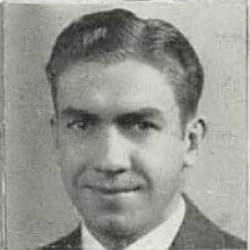 | 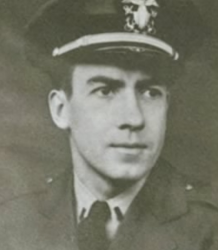 |
 | 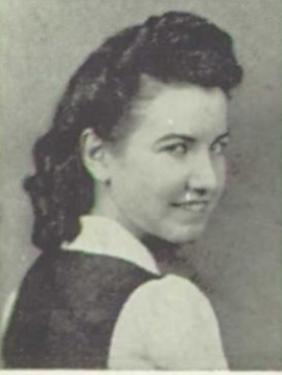 |
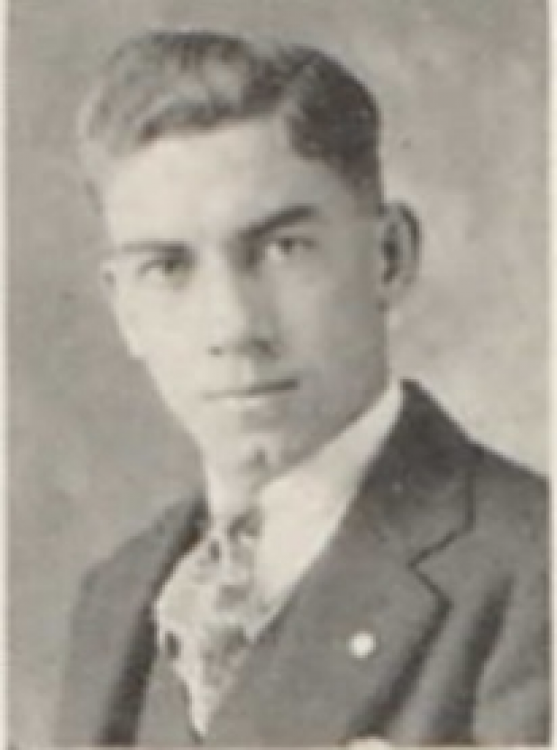 |


